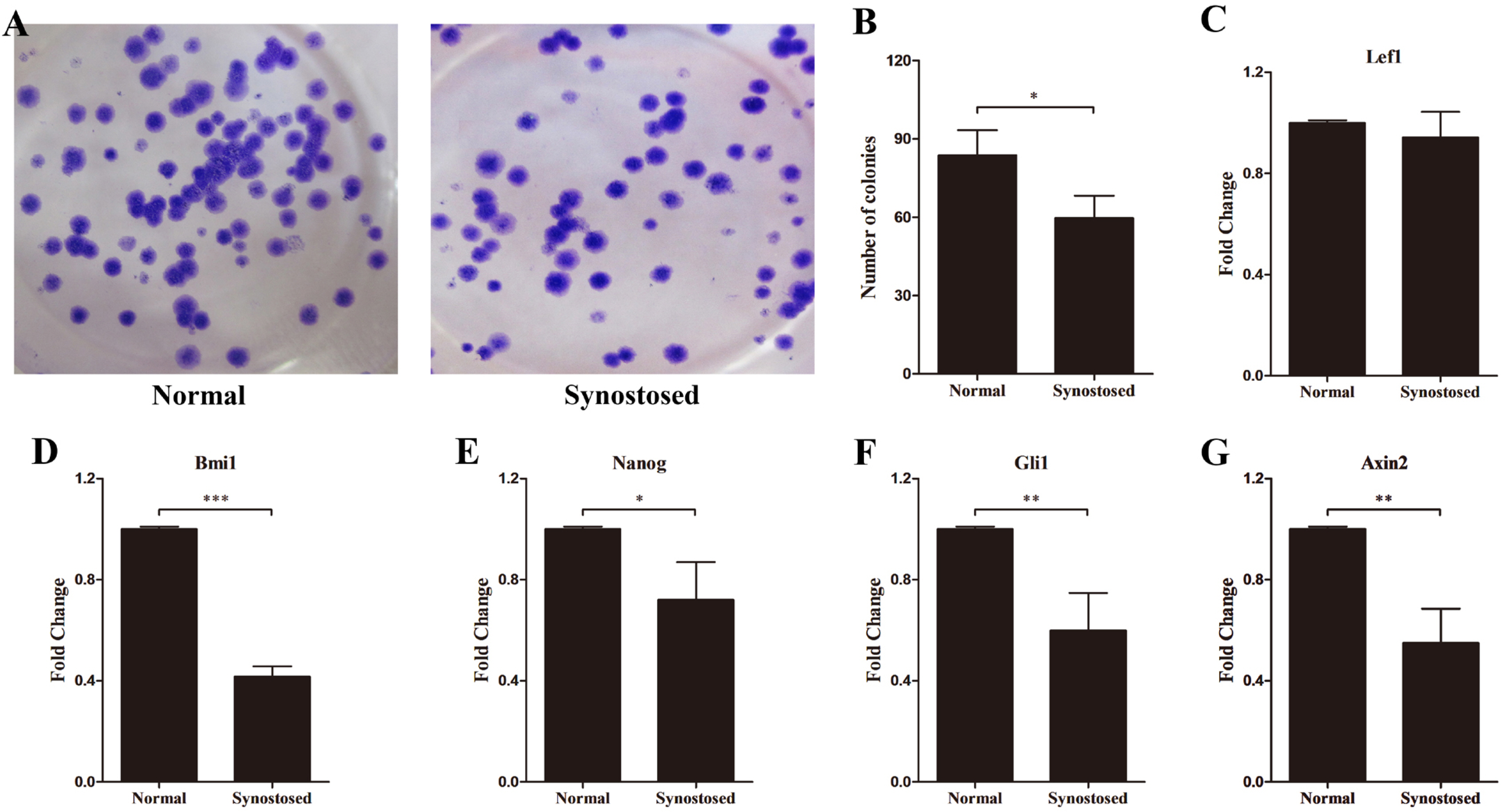5. Kirmi O, Lo SJ, Johnson D, Anslow P. 2009; Craniosynostosis: a radiological and surgical perspective. Semin Ultrasound CT MR. 30:492–512. DOI:
10.1053/j.sult.2009.08.002. PMID:
20099636.

6. Hankinson TC, Fontana EJ, Anderson RC, Feldstein NA. 2010; Surgical treatment of single-suture craniosynostosis: an argument for quantitative methods to evaluate cosmetic outcomes. J Neurosurg Pediatr. 6:193–197. DOI:
10.3171/2010.5.PEDS09313. PMID:
20672943.

7. Wan DC, Kwan MD, Lorenz HP, Longaker MT. 2008; Current treatment of craniosynostosis and future therapeutic direc-tions. Front Oral Biol. 12:209–230. DOI:
10.1159/000115043. PMID:
18391503.

8. Sahar DE, Longaker MT, Quarto N. 2005; Sox9 neural crest determinant gene controls patterning and closure of the posterior frontal cranial suture. Dev Biol. 280:344–361. DOI:
10.1016/j.ydbio.2005.01.022. PMID:
15882577.

9. Xu Y, Malladi P, Chiou M, Longaker MT. 2007; Isolation and characterization of posterofrontal/sagittal suture mesenchy-mal cells in vitro. Plast Reconstr Surg. 119:819–829. DOI:
10.1097/01.prs.0000255540.91987.a0. PMID:
17312483.

10. Nacamuli RP, Fong KD, Lenton KA, Song HM, Fang TD, Salim A, Longaker MT. 2005; Expression and possible mechanisms of regulation of BMP3 in rat cranial sutures. Plast Reconstr Surg. 116:1353–1362. DOI:
10.1097/01.prs.0000182223.85978.34. PMID:
16217479.

11. Zhao H, Feng J, Ho TV, Grimes W, Urata M, Chai Y. 2015; The suture provides a niche for mesenchymal stem cells of craniofacial bones. Nat Cell Biol. 17:386–396. DOI:
10.1038/ncb3139. PMID:
25799059. PMCID:
PMC4380556.

12. Maruyama T, Jeong J, Sheu TJ, Hsu W. 2016; Stem cells of the suture mesenchyme in craniofacial bone development, repair and regeneration. Nat Commun. 7:10526. DOI:
10.1038/ncomms10526. PMID:
26830436. PMCID:
PMC4740445.

13. Livak KJ, Schmittgen TD. 2001; Analysis of relative gene expression data using real-time quantitative PCR and the 2(-Delta Delta C(T)) Method. Methods. 25:402–408. DOI:
10.1006/meth.2001.1262. PMID:
11846609.

14. Ni QF, Tian Y, Kong LL, Lu YT, Ding WZ, Kong LB. 2014; Latexin exhibits tumor suppressor potential in hepatocellular carcinoma. Oncol Rep. 31:1364–1372. DOI:
10.3892/or.2014.2966. PMID:
24399246.

15. Lemonnier J, Haÿ E, Delannoy P, Lomri A, Modrowski D, Caverzasio J, Marie PJ. 2001; Role of N-cadherin and protein kinase C in osteoblast gene activation induced by the S252W fibroblast growth factor receptor 2 mutation in Apert cra-niosynostosis. J Bone Miner Res. 16:832–845. DOI:
10.1359/jbmr.2001.16.5.832. PMID:
11341328.

18. Reya T, Morrison SJ, Clarke MF, Weissman IL. 2001; Stem cells, cancer, and cancer stem cells. Nature. 414:105–111. DOI:
10.1038/35102167. PMID:
11689955.

20. Jiang T, Ge S, Shim YH, Zhang C, Cao D. 2015; Bone morphogenetic protein is required for fibroblast growth factor 2-dependent later-stage osteoblastic differentiation in cranial suture cells. Int J Clin Exp Pathol. 8:2946–2954. PMID:
26045803. PMCID:
PMC4440112.
21. Rice DP. 2008; Developmental anatomy of craniofacial sutures. Front Oral Biol. 12:1–21. DOI:
10.1159/000115028. PMID:
18391492.

22. Heller JB, Gabbay JS, Wasson K, Mitchell S, Heller MM, Zuk P, Bradley JP. 2007; Cranial suture response to stress: expre-ssion patterns of Noggin and Runx2. Plast Reconstr Surg. 119:2037–2045. DOI:
10.1097/01.prs.0000260589.75706.19. PMID:
17519698.

23. Park J, Park OJ, Yoon WJ, Kim HJ, Choi KY, Cho TJ, Ryoo HM. 2012; Functional characterization of a novel FGFR2 mutation, E731K, in craniosynostosis. J Cell Biochem. 113:457–464. DOI:
10.1002/jcb.23368. PMID:
21928350.

24. McGee-Lawrence ME, Li X, Bledsoe KL, Wu H, Hawse JR, Subramaniam M, Razidlo DF, Stensgard BA, Stein GS, van Wijnen AJ, Lian JB, Hsu W, Westendorf JJ. 2013; Runx2 protein represses Axin2 expression in osteoblasts and is required for craniosynostosis in Axin2-deficient mice. J Biol Chem. 288:5291–5302. DOI:
10.1074/jbc.M112.414995. PMID:
23300083. PMCID:
PMC3581413.

25. Delezoide AL, Benoist-Lasselin C, Legeai-Mallet L, Le Merrer M, Munnich A, Vekemans M, Bonaventure J. 1998; Spatio-temporal expression of FGFR 1, 2 and 3 genes during human embryo-fetal ossification. Mech Dev. 77:19–30. DOI:
10.1016/S0925-4773(98)00133-6. PMID:
9784595.

26. Greenwald JA, Mehrara BJ, Spector JA, Warren SM, Fagenholz PJ, Smith LE, Bouletreau PJ, Crisera FE, Ueno H, Longaker MT. 2001; In vivo modulation of FGF biological activity alters cranial suture fate. Am J Pathol. 158:441–452. DOI:
10.1016/S0002-9440(10)63987-9. PMID:
11159182. PMCID:
PMC1850306.

27. Jung Y, Nolta JA. 2016; BMI1 regulation of self-renewal and multipotency in human mesenchymal stem cells. Curr Stem Cell Res Ther. 11:131–140. DOI:
10.2174/1574888X1102160107171432. PMID:
26763885.

28. Alhadlaq A, Mao JJ. 2004; Mesenchymal stem cells: isolation and therapeutics. Stem Cells Dev. 13:436–448. DOI:
10.1089/scd.2004.13.436. PMID:
15345137.

30. van der Lugt NM, Domen J, Linders K, van Roon M, Robanus-Maandag E, te Riele H, van der Valk M, Deschamps J, Sofroniew M, van Lohuizen M, Berns A. 1994; Posterior transformation, neurological abnormalities, and severe hematopoietic defects in mice with a targeted deletion of the bmi-1 proto-oncogene. Genes Dev. 8:757–769. DOI:
10.1101/gad.8.7.757. PMID:
7926765.

31. Biehs B, Hu JK, Strauli NB, Sangiorgi E, Jung H, Heber RP, Ho S, Goodwin AF, Dasen JS, Capecchi MR, Klein OD. 2013; BMI1 represses Ink4a/Arf and Hox genes to regulate stem cells in the rodent incisor. Nat Cell Biol. 15:846–852. DOI:
10.1038/ncb2766. PMID:
23728424. PMCID:
PMC3735916.

32. Mitsui K, Tokuzawa Y, Itoh H, Segawa K, Murakami M, Takahashi K, Maruyama M, Maeda M, Yamanaka S. 2003; The homeoprotein Nanog is required for maintenance of pluripotency in mouse epiblast and ES cells. Cell. 113:631–642. DOI:
10.1016/S0092-8674(03)00393-3. PMID:
12787504.

33. Xie X, Piao L, Cavey GS, Old M, Teknos TN, Mapp AK, Pan Q. 2014; Phosphorylation of Nanog is essential to regulate Bmi1 and promote tumorigenesis. Oncogene. 33:2040–2052. DOI:
10.1038/onc.2013.173. PMID:
23708658. PMCID:
PMC3912208.

34. Maruyama T, Mirando AJ, Deng CX, Hsu W. 2010; The balance of WNT and FGF signaling influences mesenchymal stem cell fate during skeletal development. Sci Signal. 3:ra40. DOI:
10.1126/scisignal.2000727. PMID:
20501936. PMCID:
PMC2902546.

35. Yu HM, Jerchow B, Sheu TJ, Liu B, Costantini F, Puzas JE, Birchmeier W, Hsu W. 2005; The role of Axin2 in calvarial morphogenesis and craniosynostosis. Development. 132:1995–2005. DOI:
10.1242/dev.01786. PMID:
15790973. PMCID:
PMC1828115.









 PDF
PDF Citation
Citation Print
Print


 XML Download
XML Download